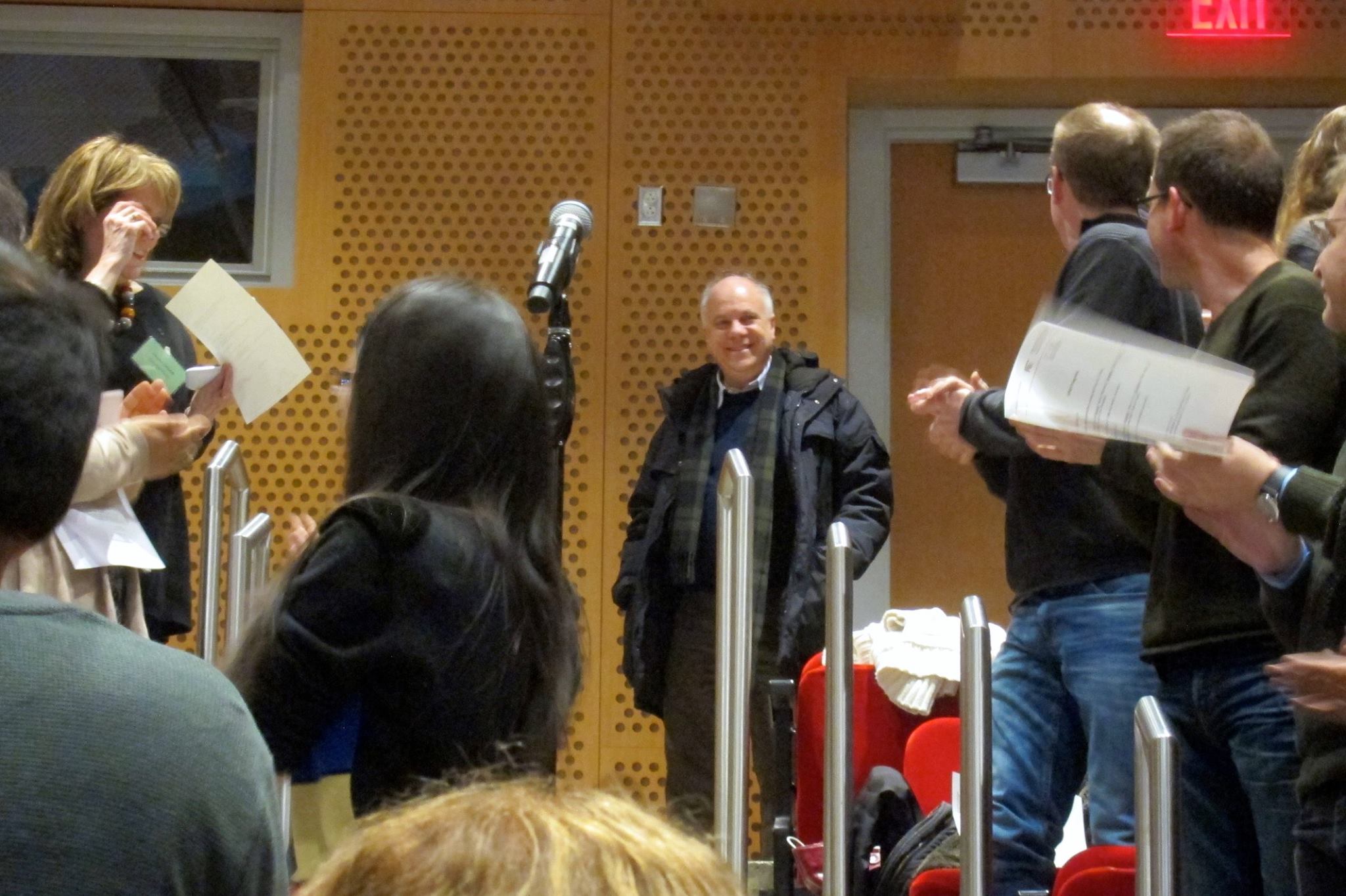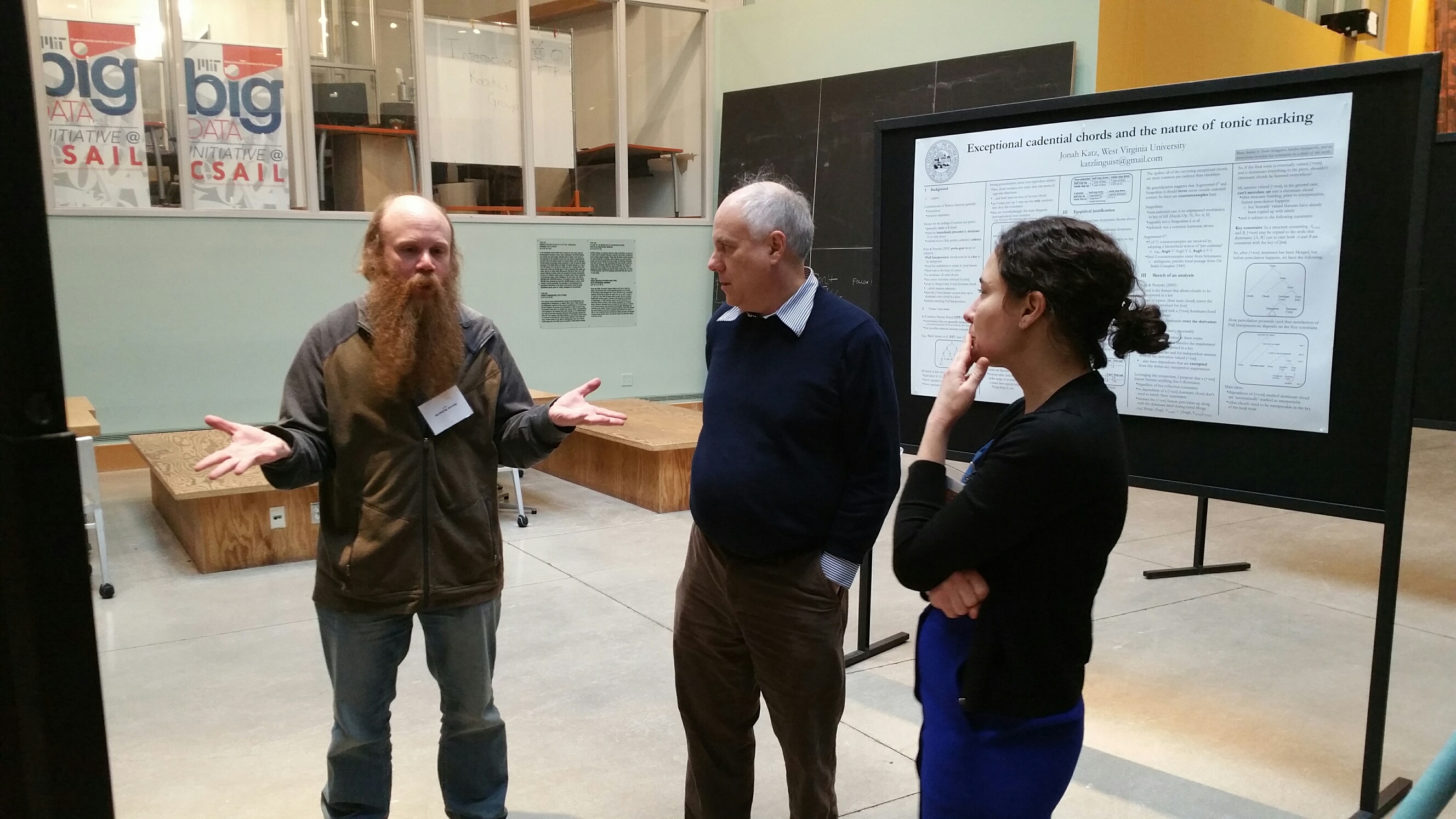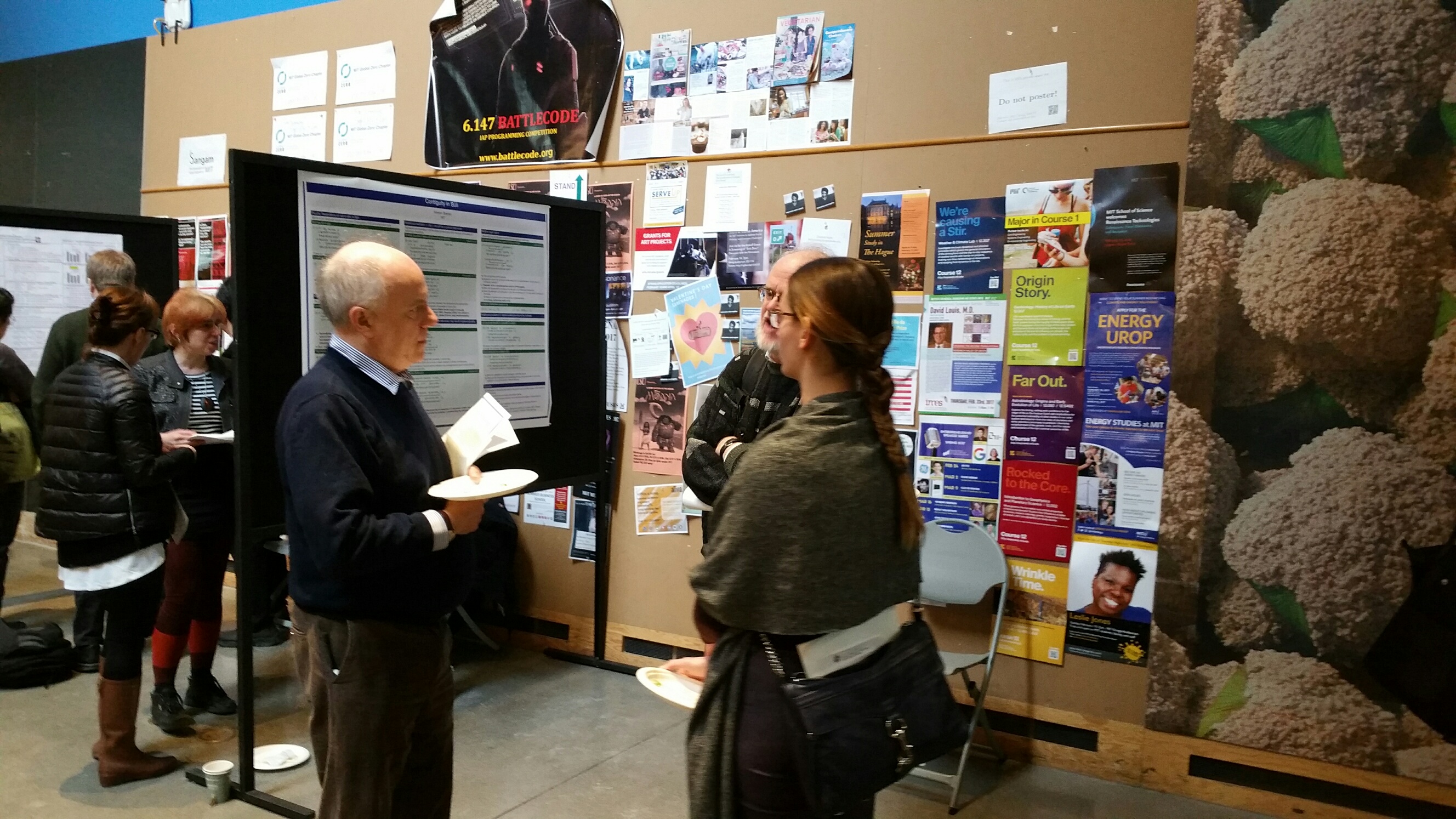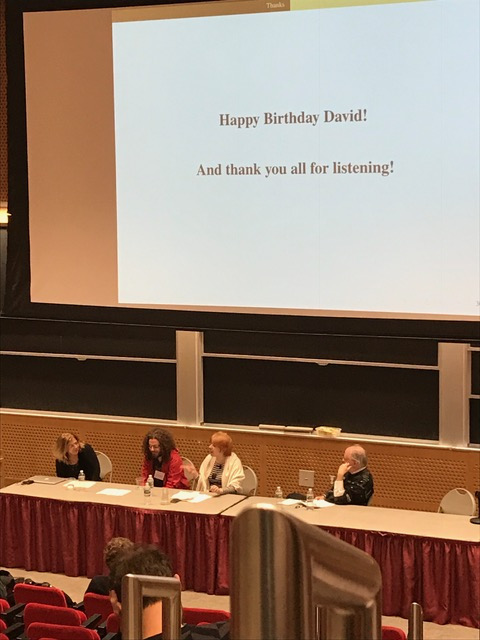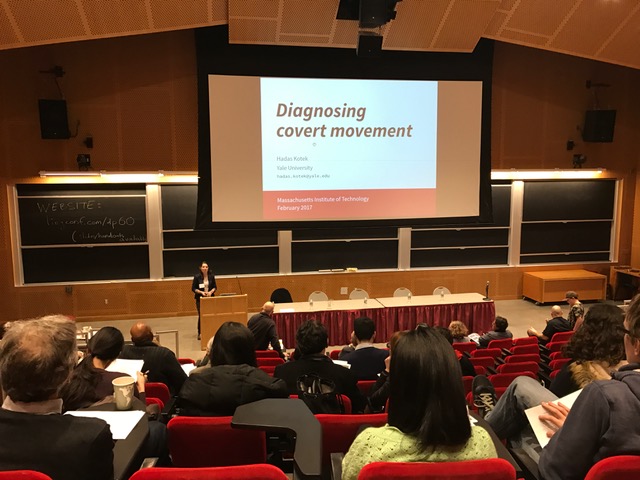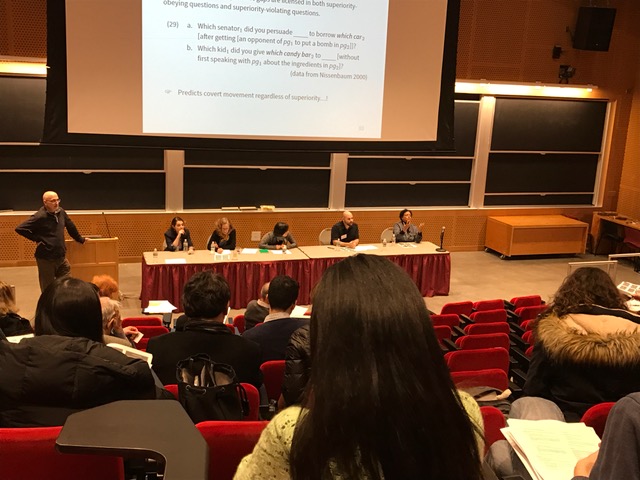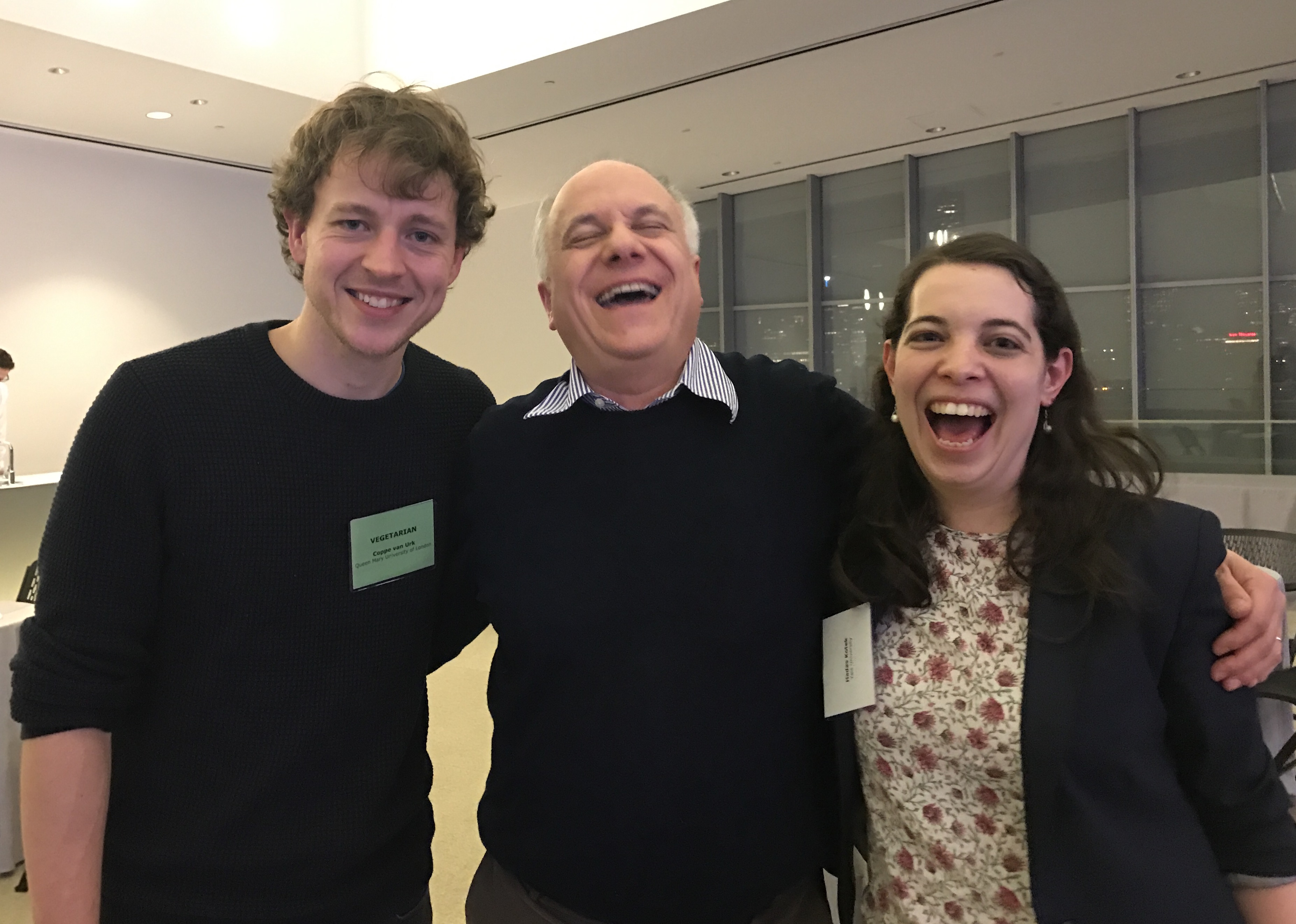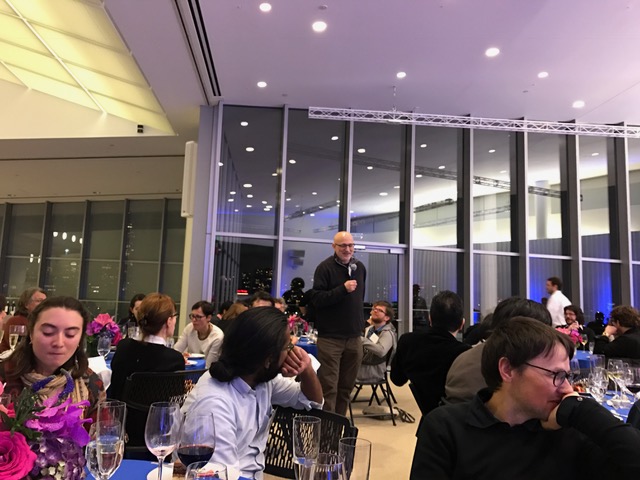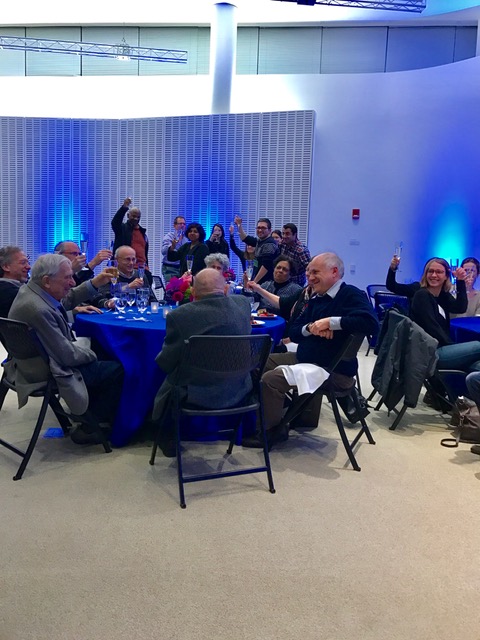This Saturday, linguists from around the world gathered in Cambridge to celebrate the life and work of our very own David Pesetsky, who recently celebrated his 60th birthday. The workshop, organized in secret over the last year and half by Claire Halpert (PhD ‘12), Sabine Iatridou (PhD ‘91), Hadas Kotek (PhD ‘14), and Coppe van Urk (PhD ‘15) (with the generous help of Mary Grenham), included two lively panels on topics close to David’s heart, case and wh-questions, and two poster sessions which presented work from linguists that David has inspired over the many years. The breadth of topics covered during the workshop spoke not only to David’s intellectual curiosity, but also to his ability as a teacher and adviser.
In tandem with the workshop, MITWPL also produced a festschrift, A pesky set: Papers for David Pesetsky, which includes 60 papers on a diverse range of topics written by David’s students.
Thank you to everyone who worked to make this a success!
(Thank you to Athulya Aravind, Snejana Iovtcheva, Michel DeGraff, and Abdul-Razak Sulemana for providing photos.)
Further information on the workshop, including handouts and slides, can be found on the workshop website.
